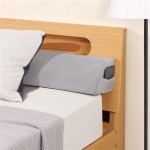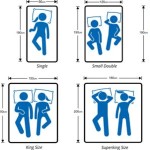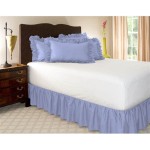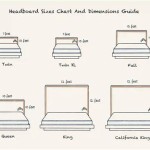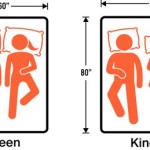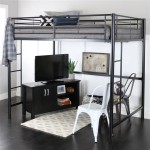Twin and Full Bed Sizes
When choosing a bed, the size is one of the most important factors. The size of the bed will affect how comfortable you are in it, how much space it takes up in your room, and how easy it is to move around.
Two of the most common bed sizes are twin and full. Twin beds are the smallest standard size, measuring 38 inches wide by 75 inches long. They are ideal for children or small adults who don't need a lot of space to sleep. Full beds are larger, measuring 54 inches wide by 75 inches long. They are a good choice for adults who need more space to sleep or who share their bed with a partner or pet.
In addition to the width and length, the height of the bed is also an important factor to consider when selecting a twin vs full mattress. The size of the bed will affect the height of the bed frame, which can affect the overall height of the bed and how comfortable it is to get in and out of.
Twin beds are typically lower to the ground than full beds, making them easier to get in and out of. This can be an important consideration for people with mobility issues or for children who may have difficulty climbing into a higher bed.
Full beds are typically higher off the ground than twin beds, which can make them more difficult to get in and out of. However, the extra height can also provide more storage space underneath the bed.
Ultimately, the best way to choose between a twin and full bed is to consider your individual needs and preferences. If you need a bed that is small and easy to move around, a twin bed is a good choice. If you need a bed that is more spacious and comfortable, a full bed is a better option.
Here is a table that summarizes the key differences between twin and full beds:
| Feature | Twin Bed | Full Bed | |---|---|---| | Width | 38 inches | 54 inches | | Length | 75 inches | 75 inches | | Height | Varies | Varies | | Ideal for | Children, small adults | Adults, couples, people who share their bed with a pet | | Advantages | Small and easy to move around | More spacious and comfortable | | Disadvantages | Not as much space to sleep | Not as easy to move around |Additional Considerations:
In addition to the size of the bed, there are a few other factors to consider when choosing a bed, including:
- The type of mattress: There are many different types of mattresses available, each with its own unique benefits and drawbacks. Some of the most common types of mattresses include innerspring, memory foam, latex, and hybrid mattresses.
- The firmness of the mattress: Mattresses come in a variety of firmness levels, from soft to firm. The firmness of the mattress should be chosen based on your personal preferences and sleeping habits.
- The size of your bedroom: The size of your bedroom will determine how much space you have for a bed. Make sure to measure your bedroom before you start shopping for a bed so that you can choose a size that will fit comfortably in the space.
- Your budget: Beds can range in price from a few hundred dollars to several thousand dollars. It's important to set a budget before you start shopping so that you can narrow down your choices.
By considering all of these factors, you can choose the perfect bed for your needs and preferences.

Twin Vs Full What Is The Difference Nectar Sleep

Twin Vs Full Mattress Nerd

Twin Bed Size Dimensions Mattress Ing Guide Nectar Sleep

Twin Vs Full Queen Which Mattress Size Is Right For You Amerisleep

Mattress Sizes Chart And Bed Dimensions Guide Amerisleep

Full Vs Twin Beds What S The Difference 2024 Mattress Clarity

Twin Size Mattress Bed Frame Dimensions Guide

Mattress Size Guide Secrets For Every Room Eachnight

Mattress Sizes 101 Finding Your Perfect Fit

Twin Vs Full Mattress Comparing Dimensions Cost More

